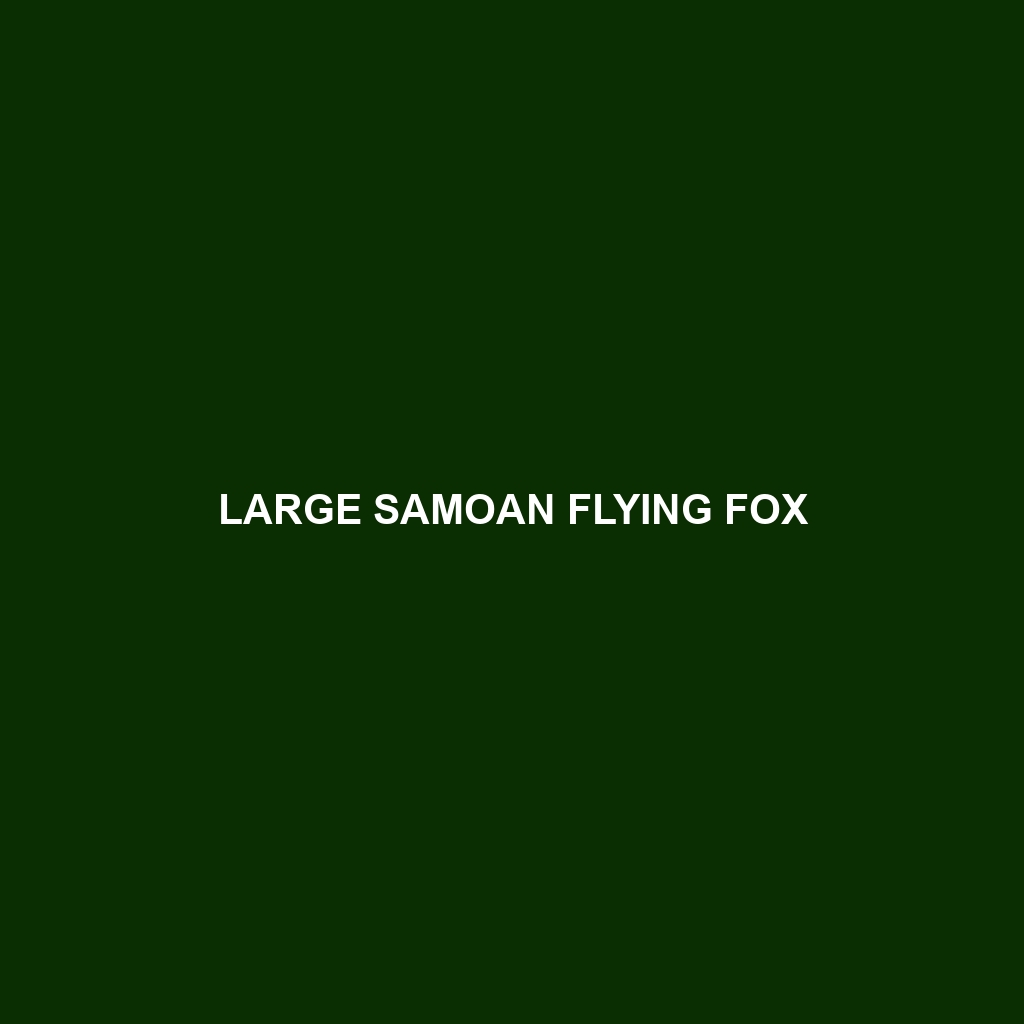Large Samoan Flying Fox
Common Name: Large Samoan Flying Fox
Scientific Name: Pteropus hasitatus
Habitat
The Large Samoan Flying Fox is primarily found in the island nation of Samoa, specifically on the islands of Upolu and Savai’i. This fruit bat inhabits tropical rainforests and coastal mangroves, thriving in areas with abundant food sources such as ripe fruits and flowers. It is often seen roosting in large colonies in tall trees, which provide shelter and safety from predators.
Physical Characteristics
This magnificent bat can have a wingspan of up to 1.5 meters (about 5 feet). It features a dense fur coat, typically dark brown or black, with some individuals displaying lighter underbellies. The Large Samoan Flying Fox has a robust body with a long snout and large eyes, which are adapted for low-light foraging. Its notable characteristic is its large, elongated wings, allowing it to glide gracefully through the forest canopy.
Behavior
The behavior of the Large Samoan Flying Fox is predominantly nocturnal, with activity peaking at dusk when they emerge from their roosts to forage. These bats are social animals, often forming large colonies that can number in the hundreds. They are known for their vocalizations during social interactions, which can include barks and screeches. Migration patterns sometimes occur in search of food, making them fascinating subjects for ecological studies.
Diet
This species primarily feeds on a diet of fruits, nectar, and flowers, making it a crucial seed disperser in its habitat. Common food sources include breadfruit, figs, and various tropical fruits. The Large Samoan Flying Fox plays an essential role in pollinating flowers and dispersing seeds, thereby contributing to the health of the ecosystems they inhabit.
Reproduction
Breeding for the Large Samoan Flying Fox typically occurs once a year, with females giving birth to a single pup after a gestation period of about 5 months. Mating rituals involve elaborate displays, and mothers care for their young by nursing and teaching them to forage. Pups remain dependent on their mothers for several months before gaining independence.
Conservation Status
The Large Samoan Flying Fox is currently classified as vulnerable according to the IUCN Red List. Key threats include habitat loss due to deforestation, hunting for bushmeat, and the destruction of their natural foraging grounds. Conservation efforts are crucial to protect this unique species and its habitat from ongoing threats.
Interesting Facts
Also known as the Samoan Fruit Bat, the Large Samoan Flying Fox has a remarkable ability to navigate through dense forests using echolocation. This species is not only significant for its ecological role but also holds cultural importance in Samoan mythology.
Role in Ecosystem
The Large Samoan Flying Fox plays a vital role in its ecosystem as both a pollinator and seed disperser. By consuming fruits and pollinating flowering plants, it helps maintain the biodiversity of the forests in which it resides. Additionally, its presence supports other animal species that rely on the same food sources and habitats.
